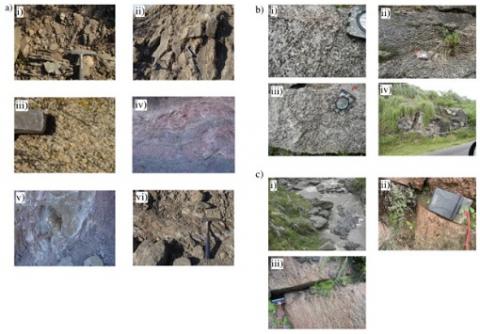U. Zimmermann, S. Quenardelle, S. Poma, J. Tait, A. Larionov, S. Presnyakov
2 019
Journal of Geodynamics Volume 129, September 2019, Pages 98-116
Petrographic and geochemical studies combined with U-Pb SHRIMP II analyses of zircons from three granitoid rocks in northwest Argentina reveal new data to enhance the understanding of the margin of western Gondwana. The I-type granite at Pomán (‘Granito Pomán’), with a typical continental arc geochemical signature, has been intruded into schists and gneisses of the regional basement during the Lower Cambrian (535 ± 5 Ma; MSDW = 0.024). This supports the existence of a volcanic arc of Lower Cambrian age evolving possibly contemporary to some successions of the Puncoviscana Complex. Two deformed and metamorphosed, granitoid bodies (Chacritas and San Ignacio-Los Pinos granitoids) derived from metamorphic (metasedimentary?) rocks, contain few euhedral Mesoproterozoic zircon crystals, which show no sign of reworking. Most of these euhedral zircons have rims of younger ages (Neoproterozoic to Permian) with Th/U ratios mostly lower than 0.001. Both, the S-type granite from Chacritas and the San Ignacio-Los Pinos granitoid from Balcozna and their protoliths, may represent the previously unidentified local source for the abundant late Mesoproterozoic detrital zircons reported in Neoproterozoic to Paleozoic sedimentary sequences of NW Argentina. This would imply Mesoproterozoic basement, alike the Arequipa Massif (in Peru and Bolivia) and the Western Sierras Pampeanas, in northwest Argentina.

